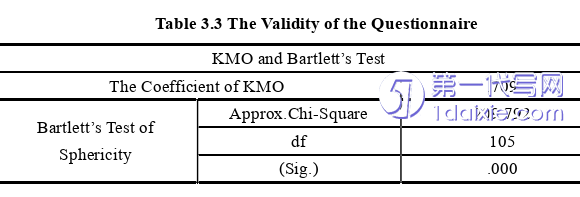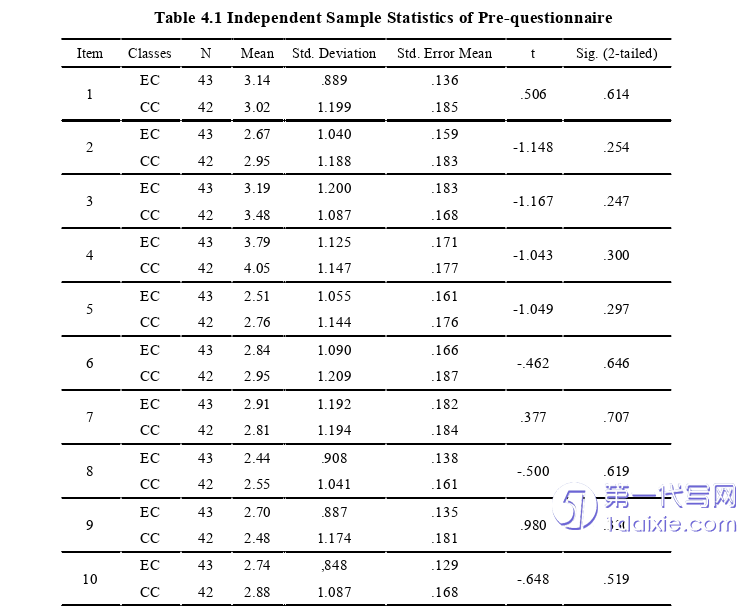本文是一篇英语论文,本文以乌鲁木齐市某中学高一年级两个平行班的85人为研究对象,进行为期四个月的教学实验。实验前,通过问卷调查和词汇测试卷了解高中生英语多义词学习的现状;实验中,实验班采用基于原型范畴理论的教学方法进行多义词教学,控制班仍采用传统的教学方法进行多义词教学。
1 Introduction
1.1 Background of the study
English, as an international language, plays an important role in the process of international communication and cooperation, and the demands of society on English speakers are becoming ever higher. On March 18-19, 2021, during the Sino-US High-Level Strategic Dialogue, Zhang Jing, interpreter of the Chinese Ministry of Foreign Affairs, delivered China’s voice to the world with a complete and accurate translation. Behind Zhang Jing’s amazing language useability are her rich vocabulary and grammatical foundation. There is no doubt that adequate vocabulary is the basis for effective communication and the basic support for language useability, and “the size of vocabulary directly determines the practical ability of language” (Wang, 2012). Vocabulary is one of the basic parts of a language, which plays a significant role in English study. As famous linguist Wilkins once said, “it is very little can be conveyed without grammar, but there is nothing can be conveyed without vocabulary” (Ma & Tang, 2009).

In China, word memorization proves a big problem for most English learners, who are troubled by the inability to remember the meaning of a word, and even more, distressed by the inability to remember the multiple meanings of a word. Sometimes, even if learners remember the basic meaning of a word, they still can’t judge its specific meaning based on context when it appears in an article. This leads to the dilemma faced by most English learners: there are no new words in a sentence, but they still can’t read it. That can easily cause English learners to be trapped in a sense of self-doubt and powerless to learn English, thus losing interest in English learning. The situation described above comes from the confusion of Chinese learners about the memory of English polysemy. “Polysemy is a universal phenomenon of human language, which refers to a word with two or more meanings” (Ao, 2006). In English, there are many words belonging to polysemy. It is said that the more commonly used a word is, the more likely it has required more than one sense (Dai & He, 2013). Lyons (1995) concluded that there is hardly ever any natural language, in which every word has and only has one meaning (Lyons, 1995).
1.2 Significance of the study
1.2.1. Theoretical Significance
Theoretically, with the development of cognitive linguistics, Prototype Category Theory has become increasingly important and is used in a wide variety of studies, including English polysemy teaching. The application of Prototype Category Theory to polysemy teaching is currently in a stage of development and refinement. By reviewing the relevant literature and summarizing the basic meaning and main ideas of the Prototype Category Theory, this study aims to explore the feasibility and effectiveness of the practice of English polysemy teaching in high school based on the Prototype Category Theory, so as to provide a new theoretical perspective and methodological guidance for teaching English polysemy in senior high school.
1.2.2. Practical Significance
From a practical point of view, applying the teaching method based on Prototype Category Theory to English polysemy teaching in senior high school can help teachers to summarize scientific and efficient polysemy teaching strategies, suggest practical teaching methods for teaching English polysemy in high school, and allow more English teachers to become familiar with it and use it rationally. In the process of English polysemy teaching, teachers, guided by the Prototype Category Theory, can better understand the intrinsic connection between cognitive structure and polysemy teaching, adjust their teaching methods according to the actual situation of students, and consciously develop their awareness and cognitive ability of polysemy learning, so as to promote the teaching of English polysemy in high school and better implement the objectives and requirements of the new curriculum and core literacy.
2 Literature Review
2.1 Key Concepts
As for the content of this study, the following key concepts need to be clarified: polysemy, polysemy in the scope of the Prototype Category Theory, prototypical meaning of polysemy and teaching methods of polysemy based on Prototype Category Theory.
2.1.1 Polysemy
Polysemy is prevalent in language, which is also an inevitable consequence of the development of language. The research on polysemy words is one of the focuses of lexicology and semantics. From an etymological point of view, polysemy is a word of Greek origin, “poly-” means ‘numerous’ and ‘-semy’ means “meaning” or “sense”. Taken together, the meaning is that a word has two or more meanings. Linguists and scholars have given different answers to the definition of polysemy at different times. The phenomenon of polysemy was first discussed in Aristotle’s writings: “When several things have a common name, but the corresponding definitions of this name are different, then these things are things of the same name and different meanings.” But Aristotle did not give a clear definition. In linguistics, the term “polysemy” was first proposed by Brial (1897), the originator of Chinese theology of law. He said that “whatever form this new meaning is, it will not put an end to the old meaning. Instead, they will coexist with each other. The same word may be used sequentially as an original or metaphorical meaning, as a narrow or generalized sense, as an abstract or concrete meaning...” Breal pointed out that the meaning of words does not eliminate the old meanings with the emergence of new meanings but is a process of co-construction, and from a diachronic point of view, the polysemy of a word is the result of the growth and development of the meaning of words (Lin & Yang, 2005). Crystal (1980) considers the term polysemy to refer to a lexical term consisting of two or more meanings. On this basis, Lyons (1977), Fromkin (1998), and Taylor (1989) all believed that the different meanings of polysemous words have a certain correlation significance. Heine (1997) gives three criteria for judging the polysemy of the word: (1) there are two or more distinct but related meanings; (2) these meanings relate only to one linguistic form; (3) The linguistic form belongs to the same morphological syntactic category in use.
2.2 Key Theories
2.2.1 Prototype Category Theory
In 1953, Wittgenstein proposed “Family Resemblance” in his book. The main idea is that a category is equivalent to a family. Members who belong to the same category have more similarities to each other, so they are distinct from other categories. Members in a category must have at least one identical or similar feature with one or more than one member of the category but cannot share a feature of the category with all members. After the concept was proposed, it caused great repercussions in the philosophical, psychological, linguistic, and cultural circles. In linguistics, the principle of Family Resemblance provides a philosophical foundation for many linguists, such as Berlin & Kay (1969), Labov (1973), and Rosch (1975). The research of these scholars has played a large role in the development and elaboration of Prototype Category Theory.
The idea of “Prototype Category Theory” first originated from the study of color by Berlin and Kay (1969). They were the first two to put forward the terms “focal color” and “Implicational Hierarchy of Basic Colors” after studying 98 color words and finding that the boundaries of colors are ambiguous, and the status of color is not equal in the color category. (Berlin & Kay, 1969) The study of Berlin and Kay’s color theory was revolutionary, and on this basis the psychologist Rosch carried out a large number of experiments to determine the cognitive status of focal colors. Focus color seems to have a cognitive significance independent of language, which is closely related to physiological human perception and mechanisms. Rosch extends this significance to other areas. In Rosch’s study, “prototype” was used instead of “focal” first. Rosch later expanded the experiment from color categories to other categories, discussing that prototypes were the most representative members of a category.
3 Research Design ............................. 27
3.1 Research Questions .................................. 27
3.2 Research Subjects ................................. 27
3.3 Research Materials ......................... 28
4 Results and Discussion .......................................... 40
4.1 The Current Situation of High School Students’ English Polysemy Learning .................. 40
4.1.1 The Results of the Current Situation of High School Students’ English Polysemy Learning ...... 40
4.1.2 Discussion on the Current Situation of High School Students’ English Polysemy Learning ............... 46
5 Conclusion ................................... 60
5.1 Major Findings ................................ 60
5.2 Implications ................................ 61
4 Results and Discussion
4.1 The Current Situation of High School Students’ English Polysemy Learning
4.1.1 The Results of the Current Situation of High School Students’ English Polysemy Learning
To solve the first research question, this study used the pre-questionnaire to understand the current situation of high school students’ English polysemy learning from students’ attitudes, confusion, strategies of polysemy. The following are the results of the pre-questionnaire.
The pre-questionnaire is distributed to the students in both EC and CC before the experiment. Three parts are included in this questionnaire. The first part(item1- item6) is designed to investigate learners’ attitudes toward polysemy learning. The second part (item7- item10) aims to survey the students’ confusion about polysemy. The last part(item11- item15)is to investigate students’ different strategies for polysemy learning. The questionnaire adopts Likert 5-grade scale to ensure the true reflection of students’ polysemy learning. The first 13 items use the A forward plus point system (A=5, B=4, C=3, D=2, E=1). The last two items use the reverse points system (A=1, B=2, C=3, D=4, E=5). The full mark for each question is 5. In EC, A total of 43 pre-questionnaires were distributed, and 43 questionnaires were recovered; In CC, 42 pre-questionnaires were distributed, and 42 copies were recovered. The results collected from the pre-questionnaire are put into SPSS 26.0 and EXCEL 2016 to get a comprehensive understanding for the polysemy learning of senior high school students and to investigate whether there is a great difference between EC and CC. The scores for the 15 items are listed below.

5 Conclusion
5.1 Major Findings
To improve the current teaching of polysemy and help students better learn polysemous words, in this experiment, the teaching method based on the Prototype Category Theory of cognitive linguistics was applied in polysemy teaching. Through the experiment, Prototype Category Theory has been shown to play an active role in the teaching of polysemy. Based on the investigation and analysis of the experiment, the main findings are as follows:
On the one hand, about the current situation of high school students’ English polysemy learning. The current situation of high school students’ English polysemy learning shows not impressive overall. The study found the following phenomena: (1) most students hold a negative attitude toward polysemy learning. (2) Most students are lacking awareness for polysemy learning, which has a bad effect on students’ English learning and quizzes. (3) Most students learn polysemous words by rote, and they don’t have a systematic way for polysemy learning. The methods adopted by the tested students in the process of learning polysemy are not reasonable and the memory effect is not ideal.
On the other hand, the overall effects of the teaching method based on Prototype Category Theory on students’ polysemy acquisition. It can be concluded that the teaching method, which is based on the Prototype Category Theory, can affect students’ polysemy acquisition in the following five aspects: (1) the application of Prototype Category Theory can arouse students’ interests and change students’ attitudes towards polysemy learning in senior high school. (2) this teaching method makes students feel much easier to recognize the different meanings of polysemous words in reading comprehension. And learning polysemous words will help students greatly reduce confusion in English learning and exams.
reference(omitted)
